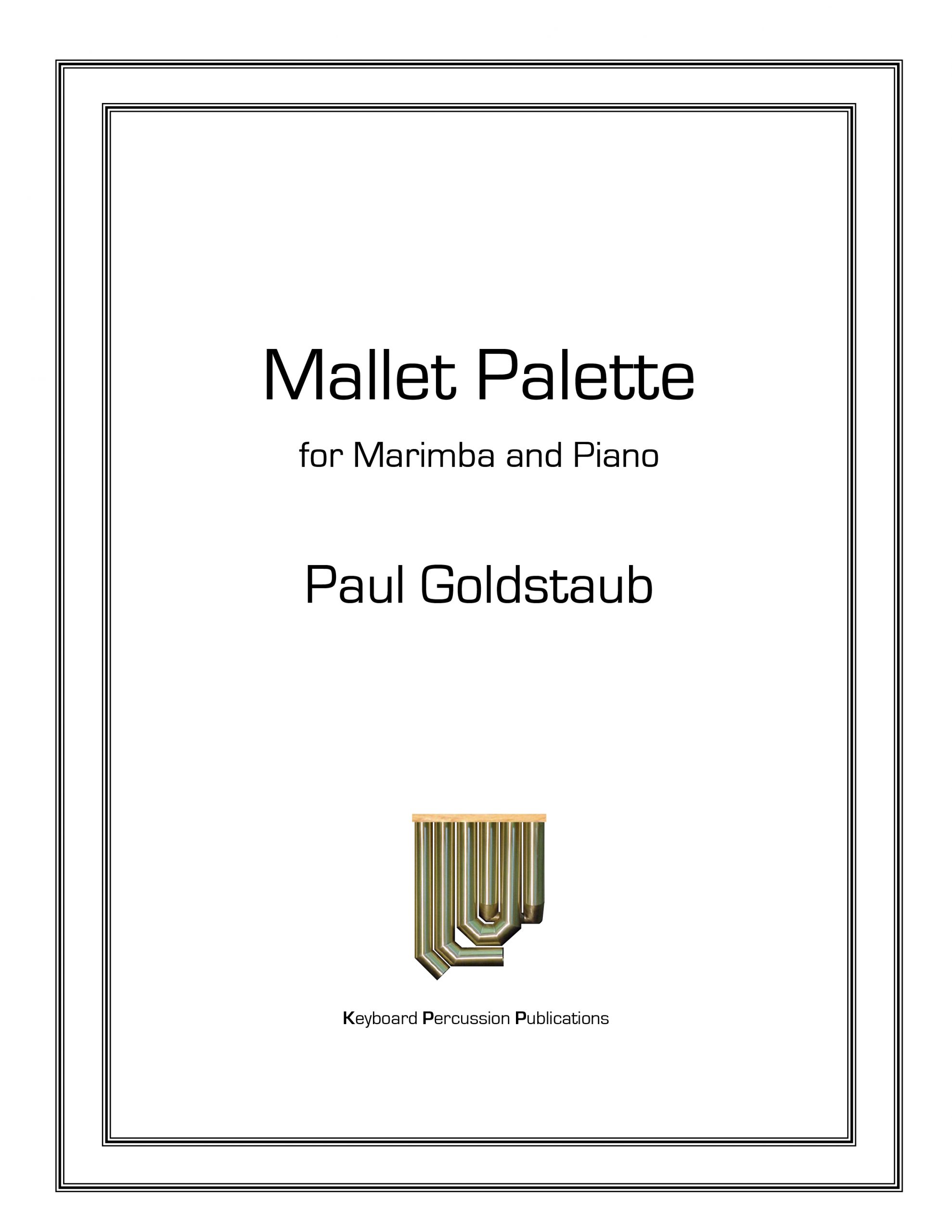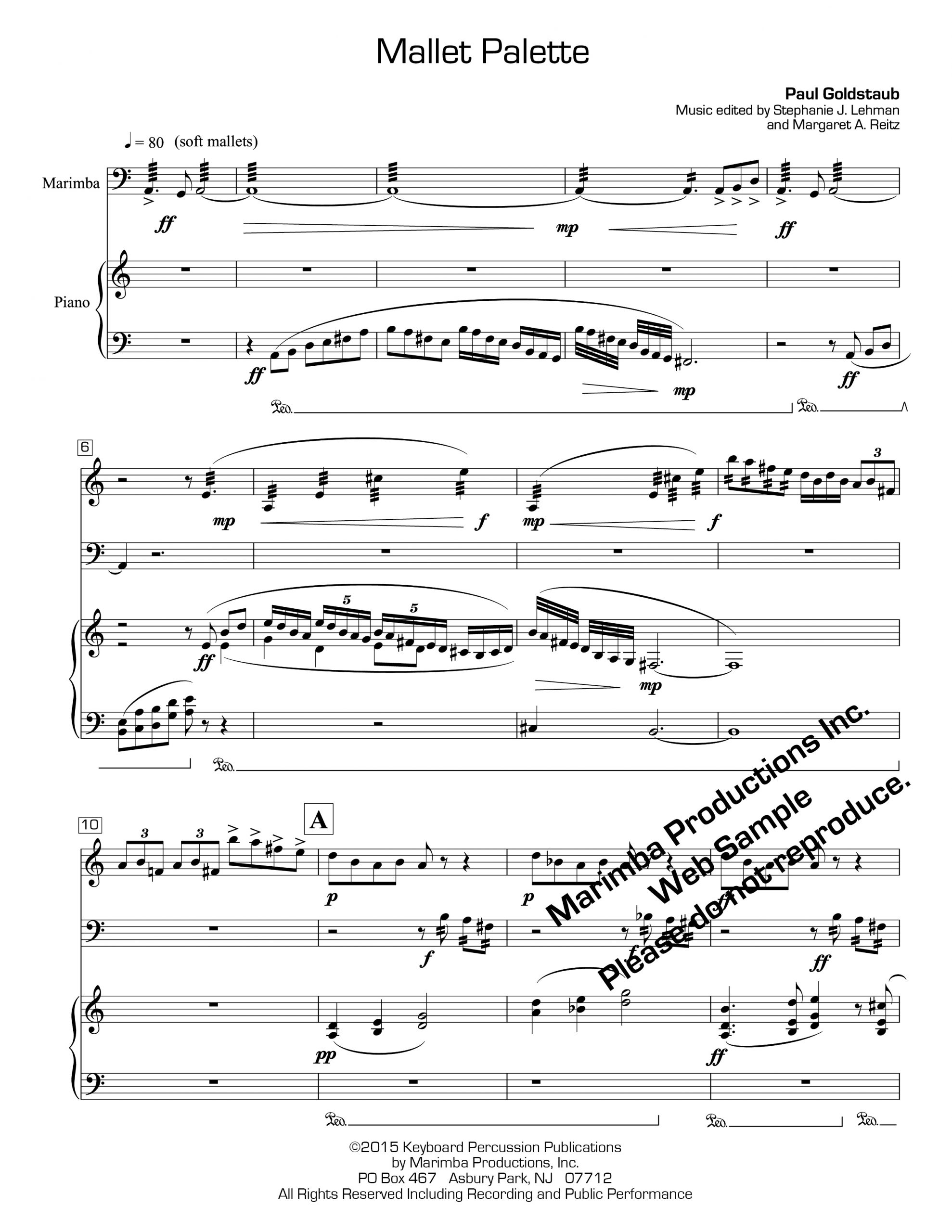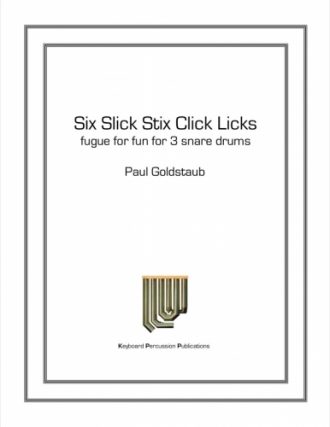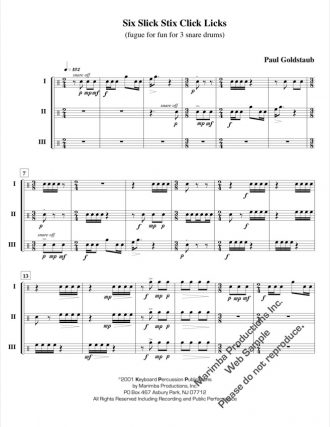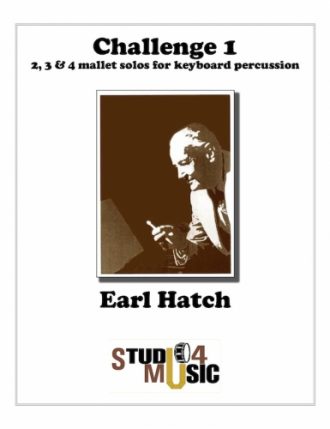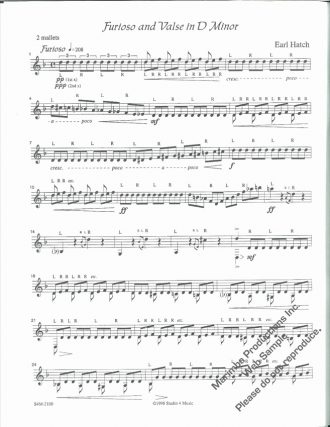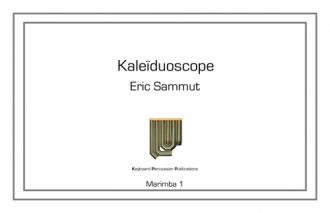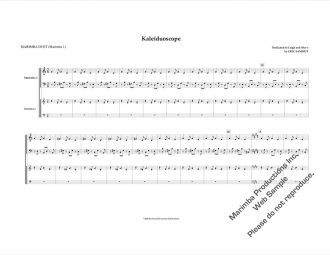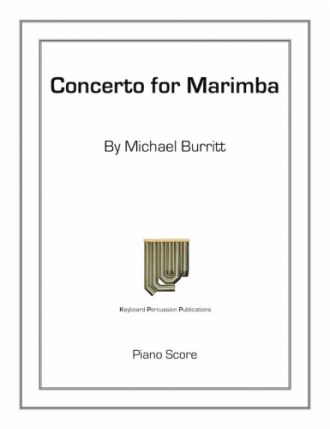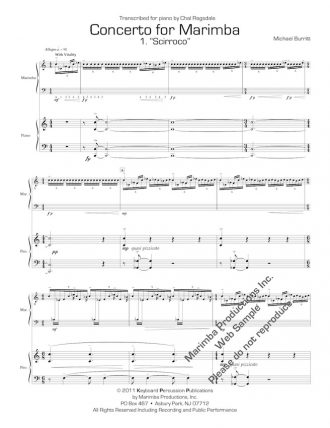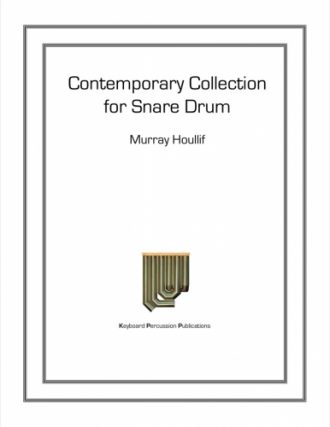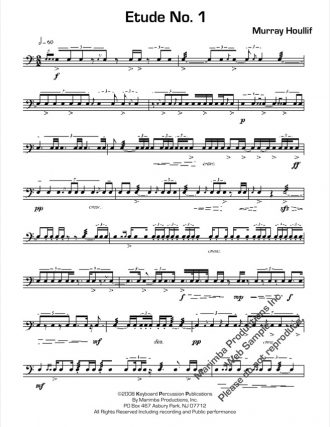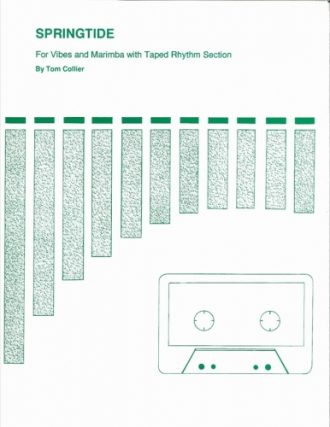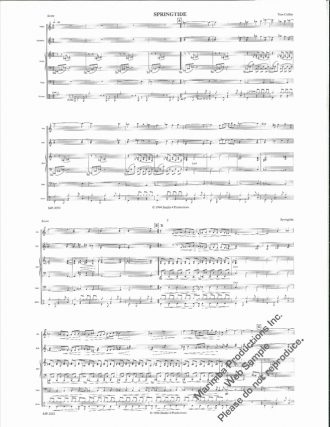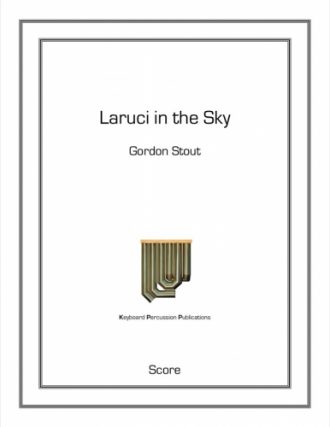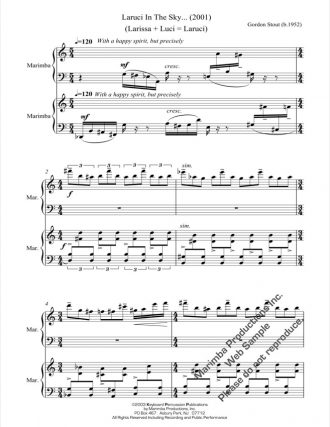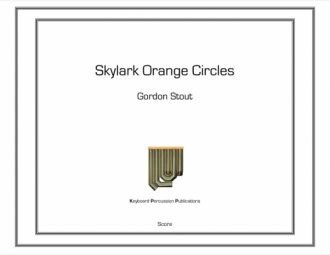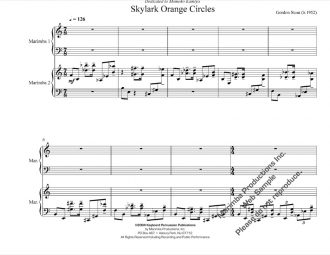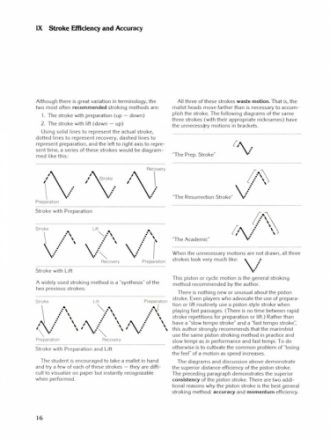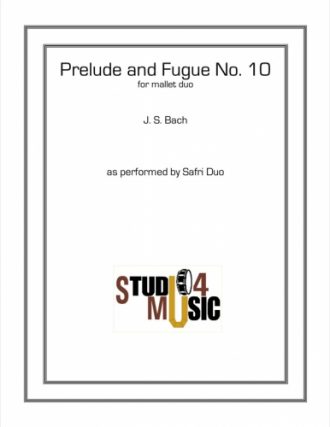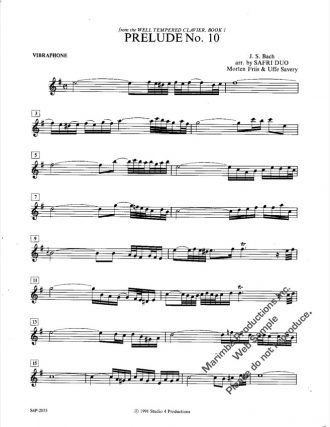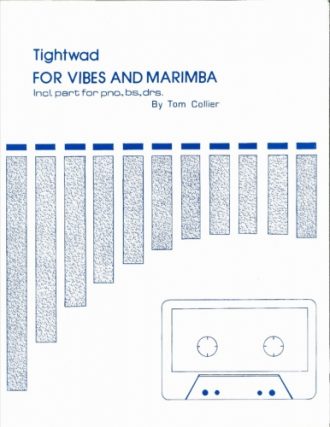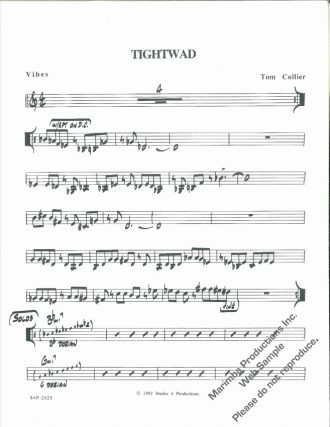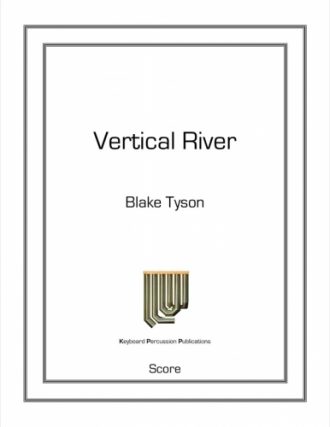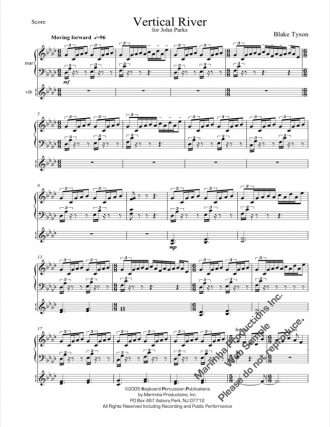Successful new works for a 2-mallet soloist on marimba with piano are rare these days. Here is a very successful piece written for just that combination. The harmonies playfully banter back and forth between pentatonic, chromatic, minor and major. Both full motives and fragments are passed back and forth between the two players. Agogic and dynamic accents create colorful pops of dissonance that penetrate the otherwise tonal realm and contribute to the intensity and forward movement to the close.
It is exciting to find a solo work for two mallets that is tonal and serious in nature. The key centers are C minor and G minor. Meters vary throughout the solo, and include 6/8, 9/8 and 5/8. The solo is accompanied by piano, and its part is more challenging than the material for the marimba. However, the way the two players work together is excellent. When the piano has longer and more lyrical lines, the marimba contrasts this with active and quick moving patterns. The reverse is the case when the piano has faster moving lines.
Set in a rondo form, the opening statement is a long, low A on the marimba, followed by quarter notes that move to eighths. From there, the tempo picks up to a quarter at 106, the meter changes to 6/8 and the key shifts to G minor. This section has nice energy, which lasts until letter K, where the tempo slows to a dotted quarter at 80. Even so, the excitement is generated when quick meter changes bring energy to the solo. Letter M marks a return to the quicker temp as in letter C. Rehearsal P is a brief return of the opening statement, and letter Q gives us the finale section.
The variety of materials in each section make this a worthy composition, which is well within the level of an advanced high school or young undergraduate student.
– George Frock, Percussive News – March 2017

